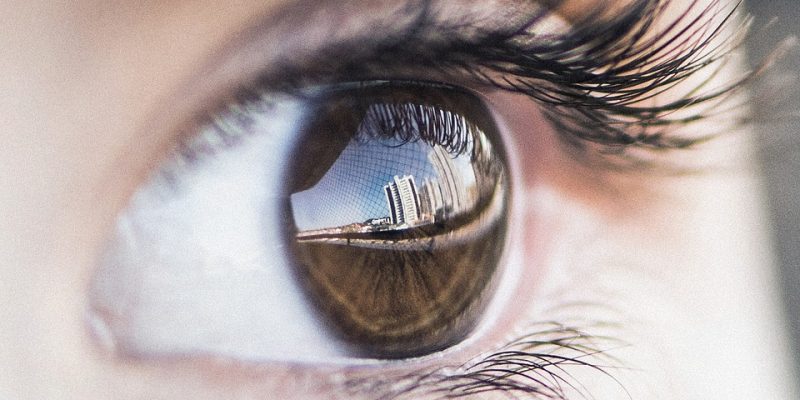Introduction
Eye problems can be caused by many different factors, ranging from genetics to age and lifestyle. Some eye problems can be minor inconveniences, while others can cause more serious damage if not addressed in a timely manner. Unfortunately, our eyes are often taken for granted until something goes wrong.
In this article we will cover the most common causes of eye problems, as well as the best treatments available to fix them. We’ll look at how certain lifestyle choices can contribute to these conditions and what you can do to protect your vision and maintain healthy eyes.
Common Eye Problems and Their Causes
There are many different types of eye problems that can occur, and each one has its own unique set of causes. In this section, we will take a look at some of the most common eye problems and their causes.
One of the most common eye problems is dry eyes. Dry eyes occur when the eyes do not produce enough tears, or when the tears evaporate too quickly. This can be caused by a variety of factors, such as environmental conditions, medications, aging, and certain medical conditions.
Another common eye problem is allergies. Allergies can cause the eyes to become irritated, itchy, and watery. Allergies are often caused by pollen, dust mites, pet dander, or other airborne irritants.
Eye infections are another common problem. These can be caused by bacteria, viruses, or fungi. The most common type of eye infection is conjunctivitis, which is also known as pink eye. Other types of eye infections include styles and blepharitis.
Finally, vision problems can also be caused by a number of different factors. These include refractive error (such as nearsightedness or farsightedness), cataracts, glaucoma, and age-related macular degeneration.
If you want to know about more information. Please Click here: How rare are Sanpaku Eyes
The Best Treatments for Eye Problems
The most common eye problems are usually treatable and temporary. However, more serious conditions can lead to vision loss if not treated properly. The best way to protect your eyes is to know the signs and symptoms of the most common eye problems and to see your doctor for regular checkups.
The following are the best treatments for some of the most common eye problems:
Conjunctivitis: Conjunctivitis, also known as pink eye, is a bacterial or viral infection of the conjunctiva, the clear membrane that covers the white part of your eye.
Pink eye is contagious and often spreads through coughing and sneezing. Treatment includes antibiotics or antiviral medications, compresses, and lubricating eye drops.
Dry Eyes: Dry eyes occur when tears don’t provide enough moisture to keep your eyes healthy and lubricated. This can happen because of certain medical conditions, medications, environmental factors, or simply as you age.
Dry eyes can be very uncomfortable and cause symptoms like burning, itching, redness, and a sandy or gritty feeling in your eyes. Treatment involves using artificial tears or gels, changing your diet, wearing glasses instead of contact lenses, or using warm compresses to help increase tear production.
Glaucoma: Glaucoma is an eye condition that damages the optic nerve. It usually happens when fluid builds up in the front part of your eye and increases pressure inside your eyeball. Early
There are a variety of different eye problems that can occur, ranging from mild to severe. The best treatments for eye problems will vary depending on the specific problem that is being treated.
Click here if you want to know about a special situation of Eyes: How rare are Sanpaku Eyes
Some of the most common eye problems include:
-Dry eyes: This is a condition in which the eyes do not produce enough tears, leading to discomfort and irritation. Treatments for dry eyes include artificial tears, ointments, and gels.
-Allergies: Allergies can cause a number of different eye symptoms, including itchiness, redness, and watery eyes. Treatments for allergies include antihistamines, decongestants, and corticosteroid eye drops.
-Conjunctivitis: This is an inflammation of the conjunctiva, which is the clear membrane that covers the white part of the eye. Conjunctivitis is usually caused by bacteria or viruses, and can be highly contagious. Treatment for conjunctivitis typically includes antibiotic or antiviral eye drops.
-Glaucoma: This is a condition in which the pressure inside the eye becomes too high, damaging the optic nerve. Glaucoma can lead to blindness if left untreated. Treatment for glaucoma typically includes medications to lower intraocular pressure as well as surgery to improve drainage of fluid from the eye.
When to See a Doctor for Your Eye Problem
If you are experiencing any kind of eye problem, it is best to see a doctor as soon as possible. This is especially true if you are experiencing symptoms like blurred vision, pain, redness, or discharge. A doctor can determine the cause of your eye problem and prescribe the best treatment to help improve your condition.
If you are experiencing any changes in your vision, pain in or around your eyes, redness, watering, discharge, swelling, or increased sensitivity to light, you should see a doctor as soon as possible. These could be signs of a serious eye problem that needs treatment.
Conclusion
While there are many causes of eye problems, it is important to understand that the best treatments and solutions can often depend on the type of problem. The most common treatment for general vision loss or conditions such as cataracts is eyeglasses, contact lenses, or Lasik surgery. However, more serious problems may require specialized treatments from an ophthalmologist in order to provide a better outcome with fewer risks. No matter what your particular condition may be, it’s important to seek professional medical advice and treatment so you can enjoy the best possible outcome for your eyesight.




















Comments